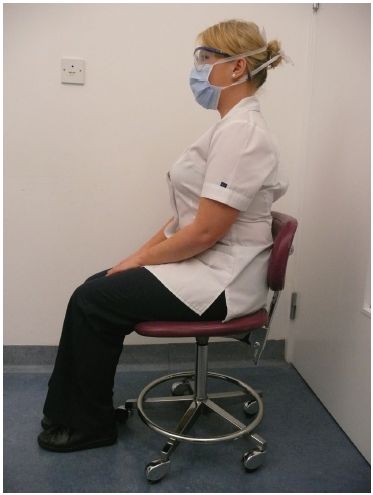Chapter 15
Introduction to four-handed dentistry
Four-handed dentistry combined with good ergonomics is a team concept practiced to increase efficiency of dental treatment, reduce stress and fatigue and increase patient comfort. It is based on the idea that using chairside time more efficiently will not only create more time, but also foster a team approach to providing patient care.
The following are central to the concept of four-handed dentistry:
- Position of the operator, dental nurse and patient
- Individual skills
- Organisation
- Equipment ergonomics and arrangement
This chapter will introduce the concept of four-handed dentistry in relation to the transfer of dental materials. It does not aim to be an exhaustive resource for the dental professional.
OPERATOR, DENTAL NURSE, PATIENT AND EQUIPMENT POSITIONING
The positioning of the operator, dental nurse and patient is determined by the procedure and which quadrant it is located in. All individuals should be seated throughout all dental procedures.
Operator (Figure 15.1)
The operator should be positioned with:
- Thighs parallel to the floor
- Feet flat on the floor
- Neck and back straight
- Forearms parallel to the floor
Figure 15.1 Operator’s position.

The operator’s stool should:
- Be mobile
- Have a stable base
- Have a height adjustment lever
- Have back support that can be vertically and horizontally adjusted
- Be padded to reduce the pressure on the thighs and back
- Be covered with a material that allows disinfection without ruining the material
Dental nurse (Figure 15.2)
The dental nurse should be positioned with:
- Thighs parallel to the floor
- Neck and back straight
- Forearms parallel to the floor
- Feet rested on the ring of the stool (this is because the dental nurse should be seated 4–6 inches higher than the operator)
- Feet directed towards the top of the patient’s chair and body close to the patient’s chair
- Body positioned so that the dental nurse can reach the treatment area, static area and transfer zone as well as positioned to allow observation of the patient
Figure 15.2 Dental nurse’s position.

The dental nurse’s stool should:
- Be mobile with a stable base
- Have a padded seat to reduce pressure on thighs and back
- Have a ring at the bottom to support the dental nurse’s feet
- Have a lever to adjust the height
- Have a padded arm to provide body support during movements and while stationary. The padded arm should be positioned just under the dental nurse’s rib cage and should not be used as an armrest
- Be covered with a material that allows disinfection without ruining the material
Patient’s positioning
The patient should be positioned:
- In the supine position
- With their head at the very top of the headrest
- With their head slightly tilted to the left or right, depending on which quadrant treatment is taking place
- When working in the mandibular arch, the chair must be slightly lowered and the chair back slightly elevated (the operator’s arms should still be parallel to the floor)
The patient’s chair should:
- Have a thin back to facilitate the operator’s legs under the chair and forearms to be parallel to the floor
- Have a rigid solid frame, supporting the patient’s back
- Be covered with a material that allows disinfection without ruining the material
- Have adjustment buttons accessible for both the operator and dental nurse (by fingertips and feet)
- Have a base that allows rotation
The dental unit should be:
- Positioned so it does not interfere with the operator and dental nurse’s zones
- Accessible to both the operator and the dental nurse
- Positioned over the patient trans-thoracically
MOVEMENTS
One of the aims of four-handed dentistry is to reduce the amount of unnecessary movements in order to reduce fatigue and stress on the operator and dental nurse. The face of a clock is used to describe the movements of the operator and dental nurse while practising four-handed dentistry.
Both the operator and the dental nurse must be aware of the visibility requirements of eac/>
Stay updated, free dental videos. Join our Telegram channel

VIDEdental - Online dental courses


